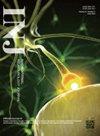基于非线性变换堆叠学习策略的前列腺癌风险分层预测
IF 1.8
3区 医学
Q3 UROLOGY & NEPHROLOGY
引用次数: 1
摘要
目的 前列腺癌(PCa)是一种起源于前列腺的上皮性恶性肿瘤,一般分为低危、中危和高危三类。PCa 的主要诊断指标是测量血清前列腺特异性抗原(PSA)值。然而,依赖 PSA 水平可能导致假阳性,从而导致不必要的活组织检查,并增加侵入性损伤的风险。因此,开发一种高效、准确的 PCa 风险分层方法势在必行。近期许多基于临床数据的 PCa 风险分层研究都采用了二元分类法,将 PCa 风险区分为低危、中危和高危。在本文中,我们提出了一种新颖的机器学习(ML)方法,利用堆叠学习策略来预测 PCa 的三方风险分层。方法 采用拉索法选择属性的临床记录与 5 个 ML 分类器一起使用。这些分类器的输出通过各种非线性变换器进行变换,然后与套索法选择的特征进行串联,形成一组新特征。在这些新特征的基础上,我们开发了一种集成不同 ML 分类器的堆叠学习策略。结果 我们提出的方法表现出卓越的性能,在由 197 名具有 42 种临床特征的 PCa 患者组成的数据集中,准确率达到 0.83,接收者工作特征曲线下面积值达到 0.88。结论 本研究旨在提高临床医生快速评估 PCa 风险分层的能力,同时减轻患者的负担。这是通过使用人工智能相关技术作为诊断 PCa 的辅助方法来实现的。本文章由计算机程序翻译,如有差异,请以英文原文为准。
Prediction of Prostate Cancer Risk Stratification Based on A Nonlinear Transformation Stacking Learning Strategy
Purpose Prostate cancer (PCa) is an epithelial malignancy that originates in the prostate gland and is generally categorized into low, intermediate, and high-risk groups. The primary diagnostic indicator for PCa is the measurement of serum prostate-specific antigen (PSA) values. However, reliance on PSA levels can result in false positives, leading to unnecessary biopsies and an increased risk of invasive injuries. Therefore, it is imperative to develop an efficient and accurate method for PCa risk stratification. Many recent studies on PCa risk stratification based on clinical data have employed a binary classification, distinguishing between low to intermediate and high risk. In this paper, we propose a novel machine learning (ML) approach utilizing a stacking learning strategy for predicting the tripartite risk stratification of PCa. Methods Clinical records, featuring attributes selected using the lasso method, were utilized with 5 ML classifiers. The outputs of these classifiers underwent transformation by various nonlinear transformers and were then concatenated with the lasso-selected features, resulting in a set of new features. A stacking learning strategy, integrating different ML classifiers, was developed based on these new features. Results Our proposed approach demonstrated superior performance, achieving an accuracy of 0.83 and an area under the receiver operating characteristic curve value of 0.88 in a dataset comprising 197 PCa patients with 42 clinical characteristics. Conclusions This study aimed to improve clinicians’ ability to rapidly assess PCa risk stratification while reducing the burden on patients. This was achieved by using artificial intelligence-related technologies as an auxiliary method for diagnosing PCa.
求助全文
通过发布文献求助,成功后即可免费获取论文全文。
去求助
来源期刊

International Neurourology Journal
UROLOGY & NEPHROLOGY-
CiteScore
4.40
自引率
21.70%
发文量
41
审稿时长
4 weeks
期刊介绍:
The International Neurourology Journal (Int Neurourol J, INJ) is a quarterly international journal that publishes high-quality research papers that provide the most significant and promising achievements in the fields of clinical neurourology and fundamental science. Specifically, fundamental science includes the most influential research papers from all fields of science and technology, revolutionizing what physicians and researchers practicing the art of neurourology worldwide know. Thus, we welcome valuable basic research articles to introduce cutting-edge translational research of fundamental sciences to clinical neurourology. In the editorials, urologists will present their perspectives on these articles. The original mission statement of the INJ was published on October 12, 1997.
INJ provides authors a fast review of their work and makes a decision in an average of three to four weeks of receiving submissions. If accepted, articles are posted online in fully citable form. Supplementary issues will be published interim to quarterlies, as necessary, to fully allow berth to accept and publish relevant articles.
 求助内容:
求助内容: 应助结果提醒方式:
应助结果提醒方式:


